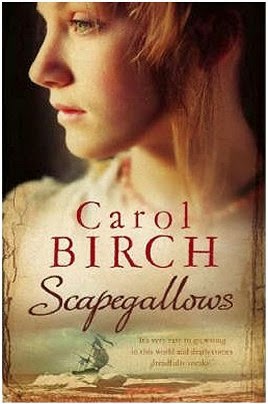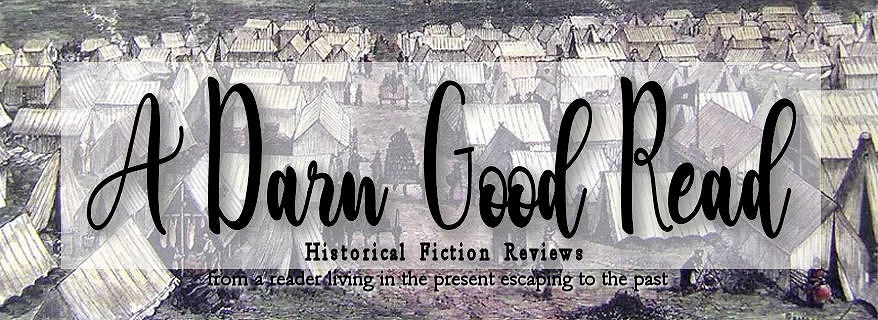This weekly meme is hosted by Sheila at Book Journey
Once again not a very good reading week for me though I tried. My selection of what to read could be to blame for my lack of motivation as Letters from Skye and Scapegallows are not gripping reads. This is reflected in my Goodreads' 2015 Reading Challenge: I'm three books behind schedule.
What I Read Last Week
Letters from Sky by Jessica Brockmole
Separated by an ocean. Devastated by war. A letter isn't always just a letter. Words on the page can drench the soul. Elspeth Dunn, a published poet living on the Isle of Skye, answers her first fan letter from Davey Graham, an impetuous young man in Illinois. Without having to worry about appearances or expectations, Elspeth and Davey confess their hopes, dreams and fears, things they've never told another soul. Even without meeting, they know one another. But as World War I engulfs Europe and Davey volunteers as an ambulance driver on the Western front, Elspeth can only wait on Skye, anxious for his return; wondering if they'll ever get a chance to meet.
Letters from Skye was a different experience for me. I had never read a novel completely in letter form and while I'd enjoyed it, I felt the letter writing styles of all the characters were too similar.
Letters from Skye was a different experience for me. I had never read a novel completely in letter form and while I'd enjoyed it, I felt the letter writing styles of all the characters were too similar.
What I'm Reading Today
Scapegallows by Carol Birch

This is the story of Margaret Catchpole, born into a smugglers' world in Suffolk in the late 1700s. As the valued servant of a wealthy family and a friend of criminals, Margaret leads a double life that inevitably brings about her downfall, and she is sentenced to hang not once, but twice. But she escapes the gallows and is transported with other convicts to Australia. A wonderful adventure story, Scapegallows takes inspiration from the life of the real Margaret Catchpole. A woman who lived by her wits, she was a slip-gibbet, a scapegallows.
Margaret Catchpole's story is interesting, but the pace is slow and lacks drama for a novel touted as "a wonderful adventure story". Perhaps that's yet to come, so I will keep reading!
Margaret Catchpole's story is interesting, but the pace is slow and lacks drama for a novel touted as "a wonderful adventure story". Perhaps that's yet to come, so I will keep reading!
A Catch of Consequence by Diana Norman
Makepeace Burke serves Patriots at her late father's tavern on the Boston waterfront in 1765 and hates the redcoats with a vengeance. But even she can't watch an angry mob drown an Englishman. She rescues him and nurses him back to health-and falls in love. In Patriot Boston, hers is an unforgivable sin-made worse by the fact that her Englishman turns out be the aristocratic Sir Philip Dapifer. Philip must smuggle Makepeace aboard a ship bound for London and save her life at the expense of the world she knows. Rich in period detail, bringing the years of colonial rebellion to vivid life, "A Catch of Consequence" is a stylish novel of Boston and England, and of a woman who defies convention in both worlds.
I've read the first chapter and looking forward to the rest of this novel once I finish Scapegallows.
What I Hope to Read Next
I'll be continuing with the Makepeace Headley trilogy.
Taking Liberties by Diana Norman
Makepeace Hedley is frantic when she learns that her young daughter, sailing home to England from the rebelling American colonies, has been taken prisoner by the British. With her usual determination, Makepeace sets out for Plymouth to rescue her child. And when Countess Diana Stacpoole is asked by an American friend to help his son, also a British prisoner, Diana responds quickly and leaves her genteel past behind. In the chaos of wartime Plymouth the two women face social outrage, public scandal, and even arrest. Amidst docks and prisons, government bureaucracy and brothels, they forge an unlikely and unshakable friendship. And in freeing others, they discover their own splendid liberty.
The Sparks Fly Upward by Diana Norman
Few of those Philippa loves in London return her affection. Not the love of her life, who has a new bride. Not even her widowed mother, Makepeace Burke. So Philippa decides on a marriage of convenience to a prudish, if kind, man. Across the Channel in France, the Reign of Terror is causing the beheading of thousands from the French nobility. Among those in danger is Philippa's friend, the Marquis de Condorcet. Not only has Philippa the means of rescuing him from the guillotine, she's got the courage. And as fate would have it, Philippa will find love where she least expects it-while staring death in the face.










